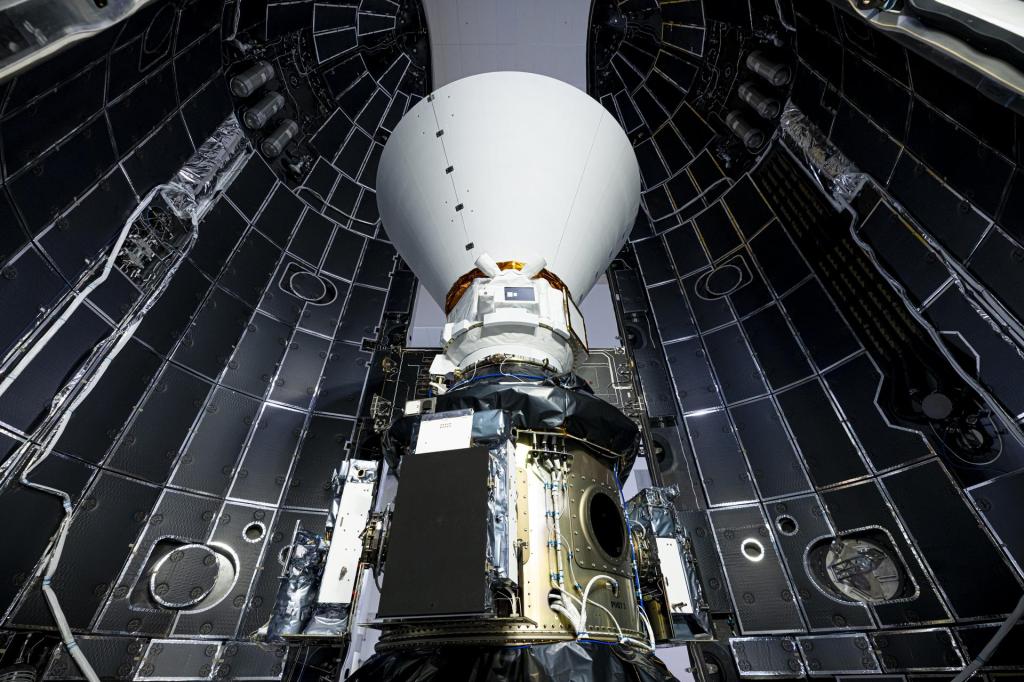Proxima b, an Earth-size planet right outside our solar system in the habitable zone of its star, may not be able to keep a grip on its atmosphere, leaving the surface exposed to harmful stellar radiation and reducing its potential for habitability.
At only four light-years away, Proxima b is our closest known extra-solar neighbor. However, due to the fact that it hasn’t been seen crossing in front of its host star, the exoplanet eludes the usual method for learning about its atmosphere. Instead, scientists must rely on models to understand whether the exoplanet is habitable.
One such computer model considered what would happen if Earth orbited Proxima Centauri, our nearest stellar neighbor and Proxima b’s host star, at the same orbit as Proxima b. The NASA study, published on July 24, 2017, in The Astrophysical Journal Letters, suggests Earth’s atmosphere wouldn’t survive in close proximity to the violent red dwarf.
“We decided to take the only habitable planet we know of so far — Earth — and put it where Proxima b is,” said Katherine Garcia-Sage, a space scientist at NASA’s Goddard Space Flight Center in Greenbelt, Maryland, and lead author of the study. The research was supported by NASA’s NExSS coalition — leading the search for life on planets beyond our solar system — and the NASA Astrobiology Institute.
Just because Proxima b’s orbit is in the habitable zone, which is the distance from its host star where water could pool on a planet’s surface, doesn’t mean it’s habitable. It doesn’t take into account, for example, whether water actually exists on the planet, or whether an atmosphere could survive at that orbit. Atmospheres are also essential for life as we know it: Having the right atmosphere allows for climate regulation, the maintenance of a water-friendly surface pressure, shielding from hazardous space weather, and the housing of life’s chemical building blocks.
Garcia-Sage and her colleagues’ computer model used Earth’s atmosphere, magnetic field and gravity as proxies for Proxima b’s. They also calculated how much radiation Proxima Centauri produces on average, based on observations from NASA’s Chandra X-ray Observatory.
With these data, their model simulates how the host star’s intense radiation and frequent flaring affect the exoplanet’s atmosphere.
“The question is, how much of the atmosphere is lost, and how quickly does that process occur?” said Ofer Cohen, a space scientist at the University of Massachusetts, Lowell and co-author of the study. “If we estimate that time, we can calculate how long it takes the atmosphere to completely escape — and compare that to the planet’s lifetime.”
An active red dwarf star like Proxima Centauri strips away atmosphere when high-energy extreme ultraviolet radiation ionizes atmospheric gases, knocking off electrons and producing a swath of electrically charged particles. In this process, the newly formed electrons gain enough energy that they can readily escape the planet’s gravity and race out of the atmosphere.
Opposite charges attract, so as more negatively charged electrons leave the atmosphere, they create a powerful charge separation that pulls positively charged ions along with them, out into space.
In Proxima Centauri’s habitable zone, Proxima b encounters bouts of extreme ultraviolet radiation hundreds of times greater than Earth does from the sun. That radiation generates enough energy to strip away not just the lightest molecules — hydrogen — but also, over time, heavier elements such as oxygen and nitrogen.
The model shows Proxima Centauri’s powerful radiation drains the Earth-like atmosphere as much as 10,000 times faster than what happens at Earth.
“This was a simple calculation based on average activity from the host star,” Garcia-Sage said. “It doesn’t consider variations like extreme heating in the star’s atmosphere or violent stellar disturbances to the exoplanet’s magnetic field — things we’d expect provide even more ionizing radiation and atmospheric escape.”
To understand how the process can vary, the scientists looked at two other factors that exacerbate atmospheric loss. First, they considered the temperature of the neutral atmosphere, called the thermosphere. They found as the thermosphere heats with more stellar radiation, atmospheric escape increases.
The scientists also considered the size of the region over which atmospheric escape happens, called the polar cap. Planets are most sensitive to magnetic effects at their magnetic poles. When magnetic field lines at the poles are closed, the polar cap is limited and charged particles remain trapped near the planet. On the other hand, greater escape occurs when magnetic field lines are open, providing a one-way route to space.
“This study looks at an under-appreciated aspect of habitability, which is atmospheric loss in the context of stellar physics,” said Shawn Domagal-Goldman, a Goddard space scientist not involved in the study. “Planets have lots of different interacting systems, and it’s important to make sure we include these interactions in our models.”
The scientists show that with the highest thermosphere temperatures and a completely open magnetic field, Proxima b could lose an amount equal to the entirety of Earth’s atmosphere in 100 million years — that’s just a fraction of Proxima b’s 4 billion years thus far. When the scientists assumed the lowest temperatures and a closed magnetic field, that much mass escapes over 2 billion years.
“Things can get interesting if an exoplanet holds on to its atmosphere, but Proxima b’s atmospheric loss rates here are so high that habitability is implausible,” said Jeremy Drake, an astrophysicist at the Harvard-Smithsonian Center for Astrophysics and co-author of the study. “This questions the habitability of planets around such red dwarfs in general.”
Red dwarfs like Proxima Centauri or the TRAPPIST-1 star are often the target of exoplanet hunts, because they are the coolest, smallest and most common stars in the galaxy. Because they are cooler and dimmer, planets have to maintain tight orbits for liquid water to be present.
But unless the atmospheric loss is counteracted by some other process — such as a massive amount of volcanic activity or comet bombardment — this close proximity, scientists are finding more often, is not promising for an atmosphere’s survival or sustainability.
For more information, go to:
Related:
- Flares May Threaten Planet Habitability Near Red Dwarfs
- NASA’s NexSS Coalition to Lead Search for Life on Distant Worlds
By Lina Tran
NASA’s Goddard Space Flight Center, Greenbelt, Md.




























